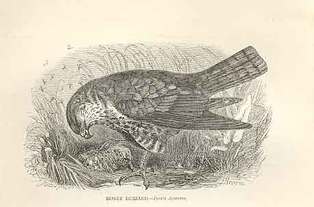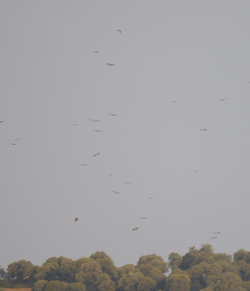That's not an easy question to answer since the charismatic do not give up the secrets of their charm easily. This mysterious character stems from a wide variety of causes, some obvious, others less so. For me,a good“Hampshire Hog”, it started when I read Gilbert White's famous description in his 'Natural History of Selborne' of a pair of birds nesting in Selborne hanger in the summer of 1780 and how a 'bold boy' climbed the nesting tree 'though standing on so steep and dizzy a situation'.
The eggs taken and the hen bird shot, so it was a lonely bird that returned again in 1781. Hampshire, particularly the New Forest, was for long seen as the heartland of the species' limited range in the UK. White notes that they nested again in 1787, but with relatively few records in the 19th century and fewer still up to the mid-20th century it remained a bird of mystery. By the 1960s and '70s, when I started birding, its status in the county was a matter of hushed whispers and sudden silences.

 Very distant Honey Buzzards!
Very distant Honey Buzzards! In my diary I wrote:
Just after 7:30 PM on Thursday (6/09) – as dusk was drawing on - a single Black Kite emerged at low level along the half hidden shallow valley, behind the ridge opposite, along which the road to San Jose runs. Skittering along at treetop level, I could have easily missed it. At 7:40, scanning for more kites trying this approach, I picked up 2-3 Honey Buzzards trying to slip past, by 7:45 there were 20+ doing so and by 7:50 numbers had swelled to over 60. Fizzing up out of the valley which could no longer contain them, they banked, dipped, drifted and circled until, suddenly, at 7:55 there were none to be seen. In the next ten minutes I had six more, but then nothing for the next 30 minutes. With the light getting much worse, I wasn't expecting any more birds. Then, at 8:35, six more drifted up from the valley. In the rapidly failing light another c25 Honey Buzzards popped up followed by another similarly sized group. Suddenly, the sky in front of the house was full of them; 50+ birds all doing a slow aerial tarantella in the gathering dusk. Slipping and sliding towards the earth, they dropped into roost; simply magic!

 RSS Feed
RSS Feed
